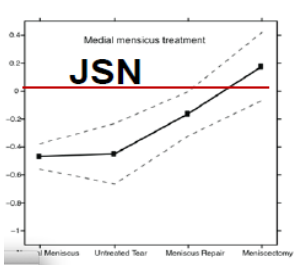Why running (and other impact activities) is NOT (necessarily) bad for your joints
I have heard client after client tell me, “I know it’s terrible for my knees but..” for the past ten plus years that I’ve been working in physical therapy and fitness. To be honest, for a long time I agreed with them. I was under the perception that running was “hard” on the joints. I would try to get them strong. But why? Who said this was true?
One of my favorite lectures I attended at the APTA Combined Sections Meeting last week (really big physical therapy conference) was about returning to running after a total knee or hip replacement. It was very interesting, but one of the biggest takeaways I got was the research on running and other high impact exercises and their effect on the joints.
Surprisingly, research demonstrates IMPROVED collagen and articular cartilage thickness in individuals that do regular low-moderate intensity running. What does this mean? It means if you are a recreational runner, your knees are likely in BETTER shape than your coworker that is the same age and doesn’t exercise. (Because “running is bad for your knees you know!”). Studies do show some increase in degenerative changes in the hips and knees of elite runners, so if you’ve been to the olympics, you may have some arthritis, but I’d say the benefits outweigh the risk if you get to stand on a podium.
So why does it seem like runners have more knee pain? Why does it SEEM like active people are the ones that end up with arthritis, and perhaps needing joint repalcements? Here’s the deal: past injuries are indicative of more arthritis down the line. For example, subjects who underwent an ACL reconstruction showed high rates of arthritis. When it comes to meniscus tears, non-operative or conservatively treated knees had LESS arthritis than those that underwent meniscal repair meniscectomy. Check out the graph below:
So there you have it! There is no proof that low-moderate intensity running increases risk of osteoarthritis, but plenty of proof that things like obesity and prior injury (especially surgical management of a prior injury), do. So keep running, and of course keep yourself strong and balanced by cross-training.
References:
Friel and Chu. Clin Sports Med. 2013;32:1-12Hansen O,. Am Acad Phys Med Rehabil. 2012;4:S117-S121.Jones M. Osteoarthr Cart, 2015Ni GX et al.. BioMed Res Int. 2013; 172392. doi: 10.1155/2013/172392. Epub 2013 Dec 31Panush RS et al. JAMA. 1986;255:1152-1154
